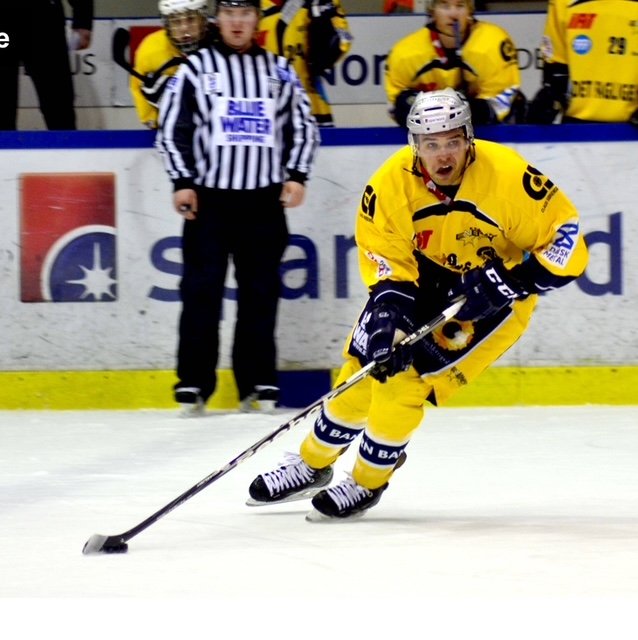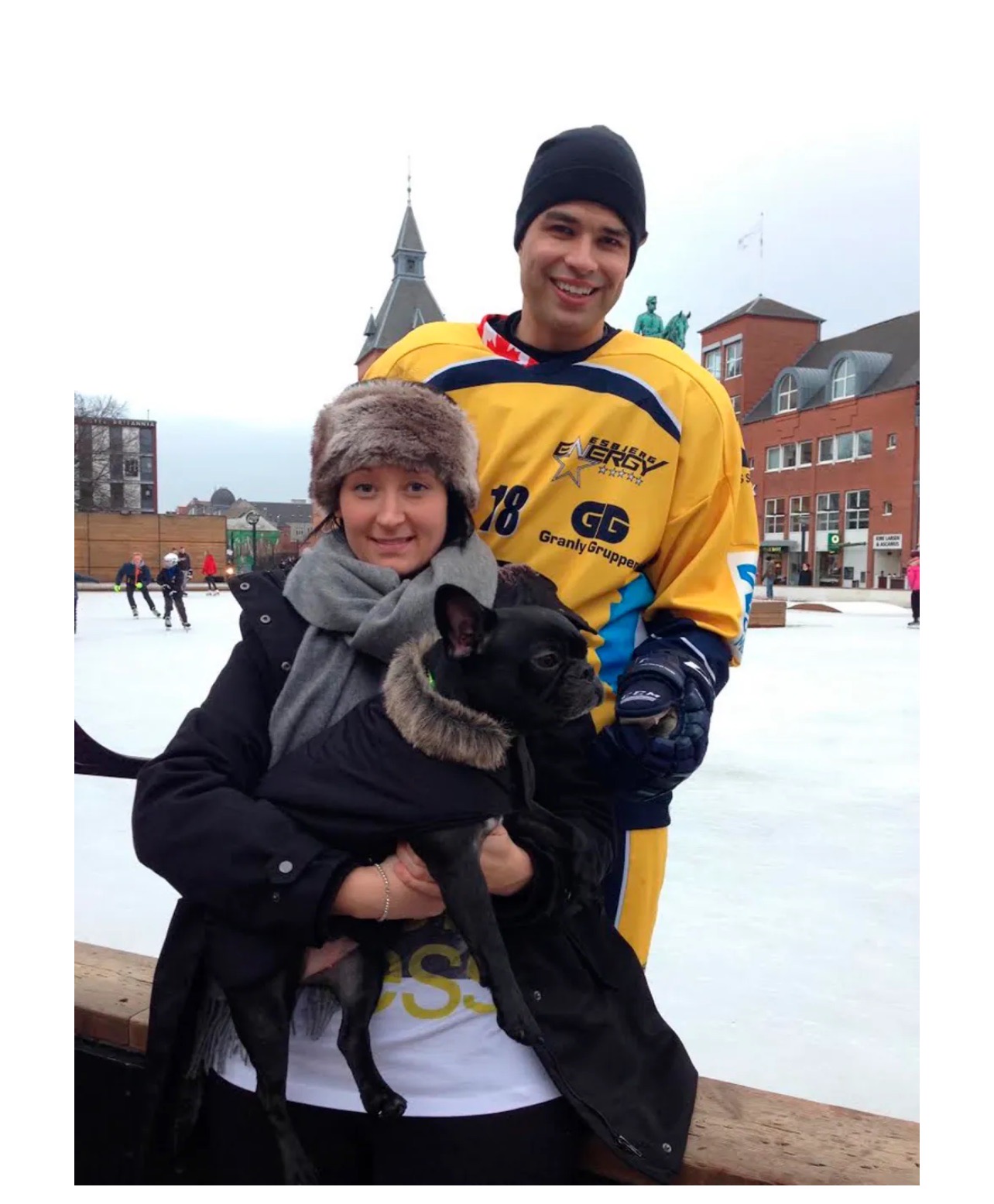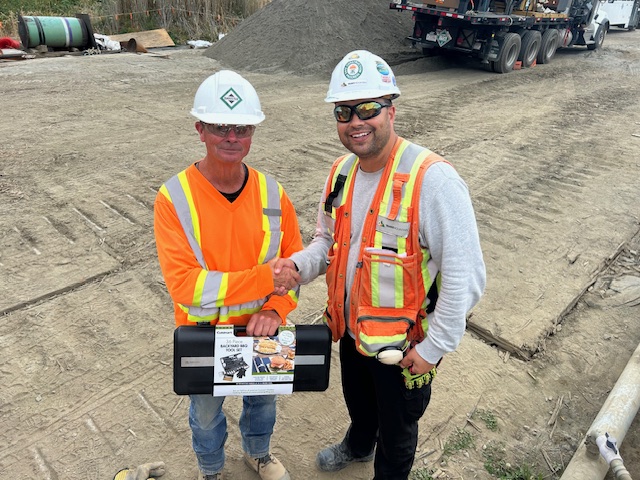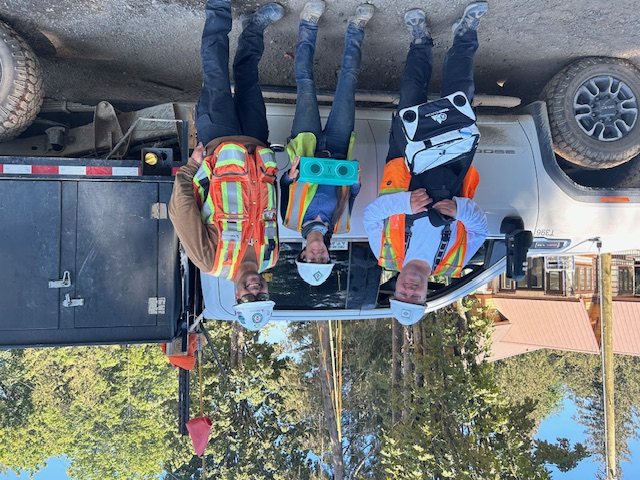From the Ice to Industry: A Former Hockey Pro’s Journey into Safety Leadership
17 Mar, 20255 mins
Transitioning from professional sports to a corporate career is no easy feat, but for former NHL draft pick Lance Monych, the path to occupational health and safety (OHS) was an unexpected yet rewarding journey. What started as a temporary offseason job soon became a lifelong passion, leading to a career dedicated to workplace safety and leadership in major industrial projects.

A Chance Encounter with Safety
Like many professional athletes, the offseason was a time for rigorous training and preparation for the next season. However, an opportunity presented itself when a firefighter brother-in-law reached out to Lance, asking for help with a safety company. The job? Sitting on a stool monitoring confined space entries at an industrial agricultural facility. It seemed simple enough, but it was the first step into the world of occupational health and safety.
For three offseasons, between playing seasons in Europe, safety work became a consistent part of life Lance's. Year after year, responsibilities grew—from monitoring confined spaces to delivering training in fall protection, respiratory protection, and more. A pivotal moment came while playing in Denmark: a conversation with the safety company’s owner led to enrolling in an online Occupational Health and Safety Certificate program at the University of New Brunswick. Juggling professional hockey and studies was challenging, but upon returning to Canada, a new career was waiting.

Lessons from the Rink to the Worksite
The transition from hockey to industrial safety came with concerns. Would years on the ice translate to skills in the workforce? The answer quickly became clear: absolutely.
- Teamwork & Communication: Just like on a hockey team, success in workplace safety depends on clear communication and collaboration. Understanding individual roles, respecting teammates (or coworkers), and working towards a common goal are just as crucial on a job site as they are in the locker room.
- Handling Adversity: In hockey, losing a game doesn’t mean dwelling on the past—it’s about learning and improving. The same applies to safety. When incidents occur, staying calm, problem-solving, and preventing future issues is the key to maintaining a strong safety culture.
- Discipline & Work Ethic: Early mornings, late-night practices, and a relentless drive to improve are habits ingrained in an athlete’s mindset. Those same qualities fuel a dedication to ensuring every worker gets home safely at the end of the day.
The Global Perspective: Playing Abroad, Leading Diverse Teams
Lance's years spent playing across North America and Europe provided an invaluable education in cultural adaptability. Whether navigating language barriers at a local market or learning new team dynamics in a foreign league, those experiences helped shape an understanding of diverse perspectives—an asset when working with multicultural teams on large-scale projects like Air Products’ Net Zero Complex.
Exposure to different safety standards and approaches across regions also reinforced a crucial lesson: safety regulations may vary, but the goal remains the same—keeping workers protected. By identifying and implementing the most stringent standards, teams can create a universally strong safety culture.
Building a Championship-Level Safety Culture
A strong safety culture, like a championship hockey team, thrives on:
- Leadership & Trust: Employees need to know that safety leadership supports them, just as players rely on coaches and captains.
- Communication & Accountability: A workplace without clear communication is like a team playing without a strategy—everyone must be on the same page to succeed.
- Work Ethic & Consistency: Safe job sites don’t happen by accident. They require continuous effort, training, and dedication.
Overcoming the Challenges of Transition
The toughest challenge wasn’t just moving into a new field—it was redefining purpose after a lifetime dedicated to one pursuit. Many former athletes struggle with finding a new passion, but early preparation made the shift smoother for Lance. The key? Saying ‘yes’ to every opportunity, gaining as much experience as possible, and committing to lifelong learning.
Final Advice from Lance for Athletes Considering Their Next Step
Follow Your Dreams, But Prepare for the Future – Give your all to sports, but recognize that careers in athletics are finite. Having a ‘Plan B’ isn’t giving up; it’s being smart.
Education is Key – Whether it’s safety, business, or another industry, gaining knowledge while playing can ease the transition.
Transferable Skills Matter – Leadership, discipline, adaptability—these are valuable in any industry. Identify how your strengths as an athlete apply beyond the game.
Be Willing to Start at the Bottom – Just like earning ice time as a rookie, working your way up in a new field takes patience, effort, and a willingness to learn.

The Journey Continues
Now, with over a decade of experience in occupational health and safety, this former athlete-turned-safety-leader is focused on one goal: ensuring that every worker on-site gets home safely. It’s a career built on the same values that made for success on the ice—teamwork, preparation, and an unwavering commitment to excellence.
For those making their own transition from sports to the corporate world, the message is clear: your skills are valuable, your experience is unique, and with the right mindset, the next chapter can be just as fulfilling as the last.



